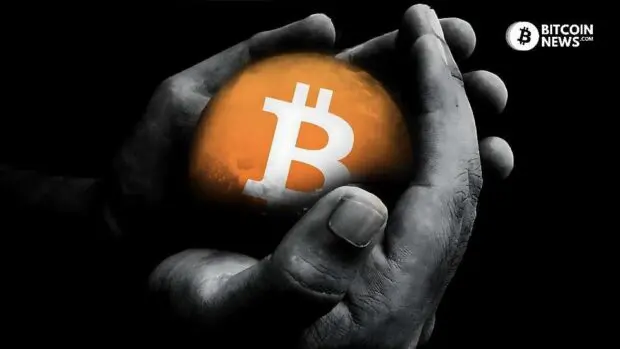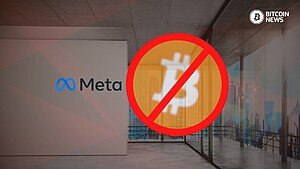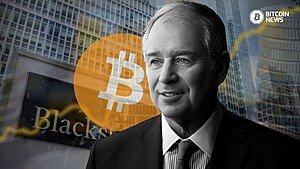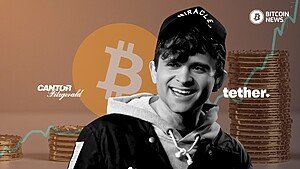This article was originally published by Beautyon on medium.com
It is republished here with permission from the author.
The Beginning
Years ago before bitcoin, on a day that changed my life forever, my late father gave me a lecture about the true nature of the United States Dollar. I can see the scene in my mind’s eye as clearly now as the day it happened. In his sitting room, he pulled a five dollar note and a ten dollar note out of his money band, and the conversation went like this…(his voice is in italics)…
“What is the difference between these two notes, my son?”
“One is is a five, and the other is a ten.”
“Yes, but how are they different from each other?”
“One is worth twice as much as the other one.”
“You’re wrong. Both of these notes are exactly the same. They are both worth nothing. One has a number 5 on it, and the other the number 10, but they are exactly the same. They use the same paper, the same ink and they are the same size. They are both identical to each other. All the money that comes from the government is a fraud, and the reason why everyone accepts it is that they don’t know this. It is a big secret. Gold on the other hand, is money. They can’t manufacture it. It is the only real money there is.”
I was horrified.
The money I had used all my life, was prepared to accept and chase after, which was, “Just the way things are”, was irrefutably proven to me to be worthless garbage and a fraud in under thirty minutes. The moment I saw, understood and accepted this shocking truth, the first thing that came to my mind was, “How can we possibly escape from this, and have real money?”
From that moment on, the dollar never looked the same again. Everyone accepted this fraud, propped it up and was prepared to live and die by it and for it. It seemed like an insurmountable problem. Every time I used the dollar, it chafed at my consciousness. Everyone everywhere was colluding with a gigantic fraud, hypnotised by what today is widely called “fiat”, and there was nothing I or anyone could do about it.
My father didn’t know about the Austrian School of Economics; he had figured out the nature of the fiat fraud for himself. Years later, thanks to Ron Paul and Lew Rockwell, I would read Murray Rothbard, and have formally confirmed to me that everything my father said was in fact correct. The only distinction was that the true fiat situation was orders of magnitude worse.
Related reading : The US Dollar Is A Ponzi You Shouldn’t Invest In
A Decade Later
I became a PGP user when it was first released, downloading it from a BBS. I made myself familiar with all of its concepts. This was a crucial step in what was to follow in subsequent years; an understanding of Public Key Cryptography, Clear Signed Digital Signatures, Key Management, and the fact that it, PGP (now GPG), is absolutely unbreakable. The case against Philip Zimmerman for exporting PGP from the USA (because it was defined as “munitions”) was also a critical stage in my education, laying the foundations of an understanding that software is text only, and 100% guaranteed protected speech.
Later in the 1990s, I stumbled upon David Chaum’s e-cash, and ran the client.

Thanks to my background, I instantly knew that this was the solution to the “fake paper money” problem. All we had to do was denominate e-cash in real money (gold) and then e-cash could be transferred between computers over the internet carrying that value as a promise like the old silver certificate dollar. There would then be a sound money in the world on a global scale with all the utility of sending email. And we could make a fortune being the administrators of it. I prepared a short introductory document describing what we were planning, and started exploring how we would structure a business built on it. There is a PDF of the actual outline document I created to introduce the idea.
When this document was circulated, the web was in its infancy. Most companies were not on-line, and very few people used email. Cellphones were large “bricks” used only by the business class. No one knew what the internet was, and only insiders and futurists had an inkling of what impact it would have on society. It is hard to imagine what the world was like back then; it was the last days of the pre-internet world, where services everyone takes for granted today were literally unimaginable. Pioneers were building the tools and services that would become mainstream, and it was obvious to me that the internet would eventually have it’s own native money that was cash like.
Then the e-cash company…went away.
Ecash was an idea decades ahead of its time; the world wasn’t ready for it, let alone buying books and other goods online. What it did do, however, was show that a system like it was possible and inevitable. It was a matter of getting the software right, and the correct market conditions being in place.
Fast forward to 2010. I had been using IRC clients…

then Napster…

then Gnutella…

and then BitTorrent…

to move files around. The problem of a centralised single point of failure that Napster represented was solved by a single genius, Bram Cohen, with his breakthrough BitTorrent protocol that split files up between connected peers, making it impossible to stop files being shared while at the same time dramatically increasing the efficiency and speeding up the rate of distribution.
All of these clients share common features:
- They are all Graphical User Interfaces to a network strictly governed by protocols that facilitate the exchange of data.
- They all have a similar UX (user experience) and presentation; you interact with them using familiar graphical search, cut, paste, point and click conventions.
- The clients are free to download and use, and you have to populate them with special data you generate, or get data from someone else.
Anyone who used these programmes was prepared for the subsequent iteration because the leap between them was negligible in terms of the mental framework you need to navigate and make use of them. The leaps in the capabilities of the underlying software architecture between each stage on the other hand, were very large, sometimes bearing no relation to previous stages.
Then it happened. One day, through a forum post, I read about “Bitcoin”.
Given my exposure to all of the above, My first reaction was…“No way”. I instantly knew that if someone had really solved this problem, it would literally be one of the most important innovations ever, on the level of Movable Type, the Transistor and Assembly Lines. The dream of electronic money would actually come to pass, and because it was truly peer to peer like BitTorrent, there would be nothing anyone could do to stop it. Billions of people would use it. Its limited supply would have beneficial effects across the entire economy. It would change everything.
Related reading : Decentralization Is The Innovation
Related reading : Bitcoin Is the Rediscovery of Money
BitTorrent works by everyone in the network having a copy of the same file; the BitTorrent client slices up the file into tiny parts that are reassembled in order by clients downloading the file. For Bitcoin to work, it would have to mean that its author had removed the central server single point of failure through some mechanism like that, sharing the transaction database amongst the peers, resolving The Double Spending Problem that made a central server necessary by everyone watching the network…but had he actually done it? I had to find out!
I immediately downloaded Bitcoin and started mining it. I sent it and received it. It appeared to work. It was literally unbelievable.

“I started writing about what this would mean in practice on December 10th, 2010 at the blog I was running. This is an excerpt from my first writing on Bitcoin:

BitTorrent proved how ineffective measures to stop file sharing were, now people would be sharing Bitcoin instead of files, and because the files being broadcast in Bitcoin were tiny, the entire network would be reconciled very quickly. Moving a 758-megabyte AVI file could take hours over a 128k modem; a Bitcoin transaction being only a few bytes of text reached every node in seconds.
What was going to happen next was obvious to me; everyone would be running their own copy of the Bitcoin software, and managing their money themselves. The network would have all the incentives of the Warez scene, but with a much wider, powerful and deeper reach, since everyone uses money. They would be able to buy and sell with Bitcoin globally, and the amount of money would be irrelevant to the speed of transfer, because a Bitcoin transaction is just an insignificantly small piece of digitally signed text being stored by every client, orders of magnitude smaller than a movie file, software application or MP3.
Bitcoin was it. Bitcoin is what I had been waiting for. Bitcoin put together all of the battle-hardened software techniques, peer to peer architecture from file sharing, sound monetary theory from the Austrian School, a predictable emission curve, balanced adversarial incentives and infallible cryptography in a tour de force of techniques to create a single brilliant and robust system that required only user participation at any level to be a success. Anyone who had run all the software listed above as I had done, and had the other elements of my background would have been able to see this. The problem with Bitcoin was not how it worked, but how to turn the plague of worthless, fraudulent fiat into Bitcoin; how to bootstrap the system so that it replaced money. In a sentence, “How to Get Bitcoin”.
Subsequently, MtGOX appeared as a way to get Bitcoin. They required a username and password to use their service, an offer which I point blank refused. After having spent years on IRC, Napster, Gnutella, and BitTorrent, I was used to not having an account and getting exactly what I want immediately, no questions asked; why should I now “sign up” for what is essentially another type of BitTorrent, and allow them to store my Bitcoin to boot? Their offer was absurd on its face, and their subsequent collapse proved that stance to be the correct one. I took the plunge with Amir Taki’s Intersango service however, as a means of buying bitcoin, and bought my first batch of Bitcoin at £7 each, immediately offloading it on to my own Bitcoin client.

Buying Bitcoin that way was hard, and took an absurd three days for the process to complete.
That’s when it came to me…
- If Bitcoin becomes a global phenomenon, it will be used on the internet in the place of money.
- That means buying large purchases from Amazon down to micro-payments and all sorts of other things will suddenly become possible with a frictionless tool right in your hand that totally eliminates payer fraud.
- It will mean people will need to get Bitcoin in a trivially simple and fast process that is as easy as “Topping Up” a mobile phone. If we can top up a phone, why can’t we top up a Bitcoin “wallet”?
The answer was, “There is no reason why not”. That was when I decided to write Azteco. I had trained myself to develop with LAMP (Linux, Apache, MySQL and PHP), and had written a very complex SMS broadcast project called Upingme, that relied on telecom provider APIs, and the Bitcoin Reference Client provided a rich API to programme against. It was just a matter of working out the details. As a proof of concept, I integrated Bitcoin payments into Upingme, allowing users to buy SMS credits with Bitcoin. Adding Bitcoin payments was a straightforward task. After completing that concept, I started working on Azteco full time. Without users to account for, the entire Azteco process was simplified and streamlined across the board.
Now you know (if you have been following me on Twitter or reading my Medium posts) why I have been dismissive of “Bitcoin backed by Gold” and the other things people keep coming up with; they are all old ideas that are inferior to pure Bitcoin. History is repeating and rhyming because there aren’t very many people who’ve seen the whole picture. They arrive as latecomers and do what makes sense to them, just as people did in the 1990s, without knowing what has been tried before. It’s very hard to find even a screen-grab of the Chaum’s e-cash client running; how can people new to “The Money Problem” even begin to think about good solutions and services that use Bitcoin by its nature? The majority of them never thought fiat was a problem in the first place. They don’t encrypt their email. They don’t know about “The Crypto Wars”. They think legitimacy in software comes from ridiculous, insulting and anti-American “BitLicenses”, Cargo Cult “Foundations” and other worthless nonsense. How can they possibly get any of this right, right out of the box?
The answer is, they can’t.
It also explains why many immature people are impatient with the speed of changes to Bitcoin. None of them have the background to understand just how long it takes to get from one major innovation stage to another. Nor do they understand how difficult it is to produce these software clients, the underlying concepts and the networks they sit on top of or the withering attacks they inevitably come under from hostile actors both on and off-line.
The Year of Bitcoin
Now that Bitcoin is old and totally established, we can see many of my predictions have come true. Here is just one of them from 2011, anticipating “Satoshi Pay”:

My contention that saying “Bitcoin is not money” is the best way forward was only understood after the disaster of BitLicence. Subsequently, Token sellers claimed that what they were selling was not money or a Security, and Lightning payments are explicitly denied to be money (quite sensibly).

There have been many such posts from this author, but perhaps the most important was one of the earliest examples debunking the “Blockchain not Bitcoin” fad, the narrative for which has now totally collapsed:

There are many examples, and I can’t go through them all here. Time and again anti-Bitcoin people fail to produce anything as powerful as Bitcoin with its balanced incentives and unencumbered entry into the market, and in each instance, had they read BLOGDIAL or this Medium account, they could have avoided wasting their time. In the end, they will all come to Bitcoin, or end up on their bespoke systems that will never approach Bitcoin’s utility or value.
Bitcoin is not dead, as the R3 people claimed. It hasn’t frozen up or done any of the things its detractors claimed would cause its demise. Bitcoin is more powerful than ever, with new features being added and new services coming on line to serve the public.
It isn’t too late for a jurisdiction to become the natural home of Bitcoin, but for it to do so, it must adjust to the new reality, because Bitcoin will not be changing to accommodate Computer Illiteracy and Luddism. America has the best chance of doing this, if it follows The Constitution.
The Here and Now
Fast forward to today. Azteco has six year Google Product Manager veteran Paul Ferguson as co-founder, Tom Dobbels, seasoned and relentless Head of Sales who has just completed a very large deal with Xoxoday in India, and very, very large ingerations launched across Europe, with astonishingly large integrations about to go live. We have two senior global executive class advisers, and a slew of enthusiastic interns doing heavy lifting. This is a world-class team, and our sales are doubling every month.
Everyone who tries the Azteco service is shocked at how fast and simple it is, and the common refrain is, “Why isn’t every service like this?”. We’re partnering with the world’s best Bitcoin wallets in the form of Pine,
Bluewallet, Edge and others so that you can redeem your voucher with a single motion, and we have other very neat things in store. We are, naturally, quite excited.

The answer to “Why isn’t every service like this?” is that Azteco is different because we started from a correct set of fundamental principles and understanding. We work only from these first principles, and not from wrong conventions.
We have extensive first hand experience in previous peer to peer services of different kinds; we know exactly what we are dealing with, why it was created and what it looks like when these services go global. If you don’t come from the right background, have never run the related predecessor software (like GPG or file sharing clients), don’t have a grasp of the correct economic theory or mentality about software, lack understanding of cryptography and the principles behind why privacy is important, it is difficult to synthesise a proper understanding from nothing, and much harder to design a correct business model. You have to have a strong mix of everything, or you’re lost.
Big Numbers
There are many people without access to financial services who Azteco will serve. Did you know that there are one million (1,000,000) people in the UK who don’t have a bank account? Sixty million (60,000,000) in Mexico? Twenty five million and twenty five thousand (25,025,000) in the USA? And two billion (2,000,000,000) globally? By serving a fraction of these people we are set to become a huge service. Then of course, there are hundreds of millions of people who will just want to use Bitcoin because it is fantastically convenient, and easy to use; orders of magnitude easier than using a credit card online, whilst totally eliminating payer fraud.
Azteco serves the banked and the unbanked. Azteco serves you. Azteco serves you quickly. Azteco will change your thinking about Bitcoin.
Once you use Azteco, you will never tolerate anything less.
Why would you?










